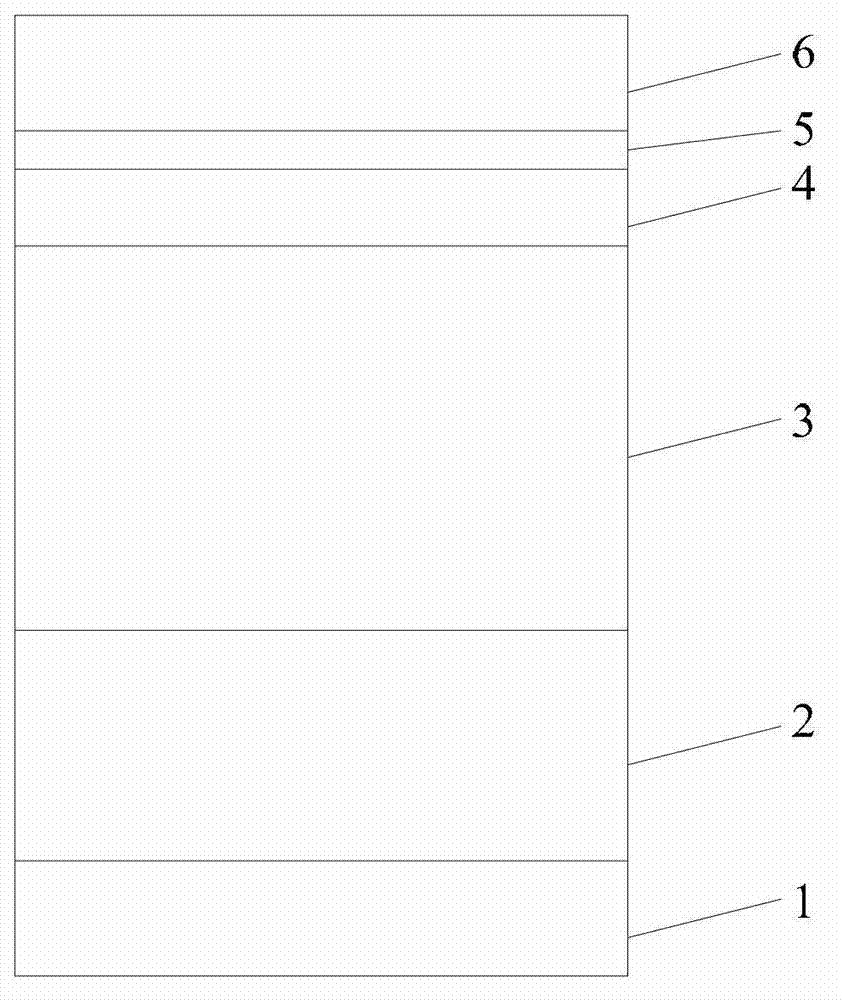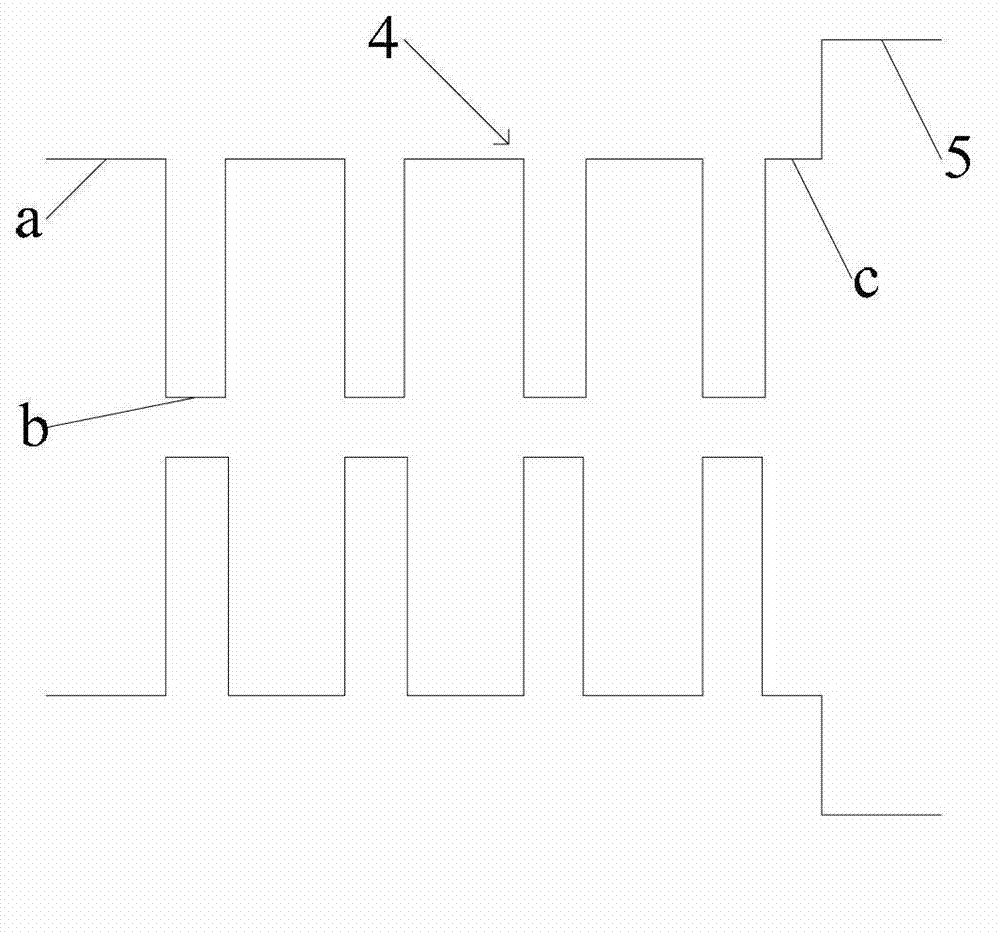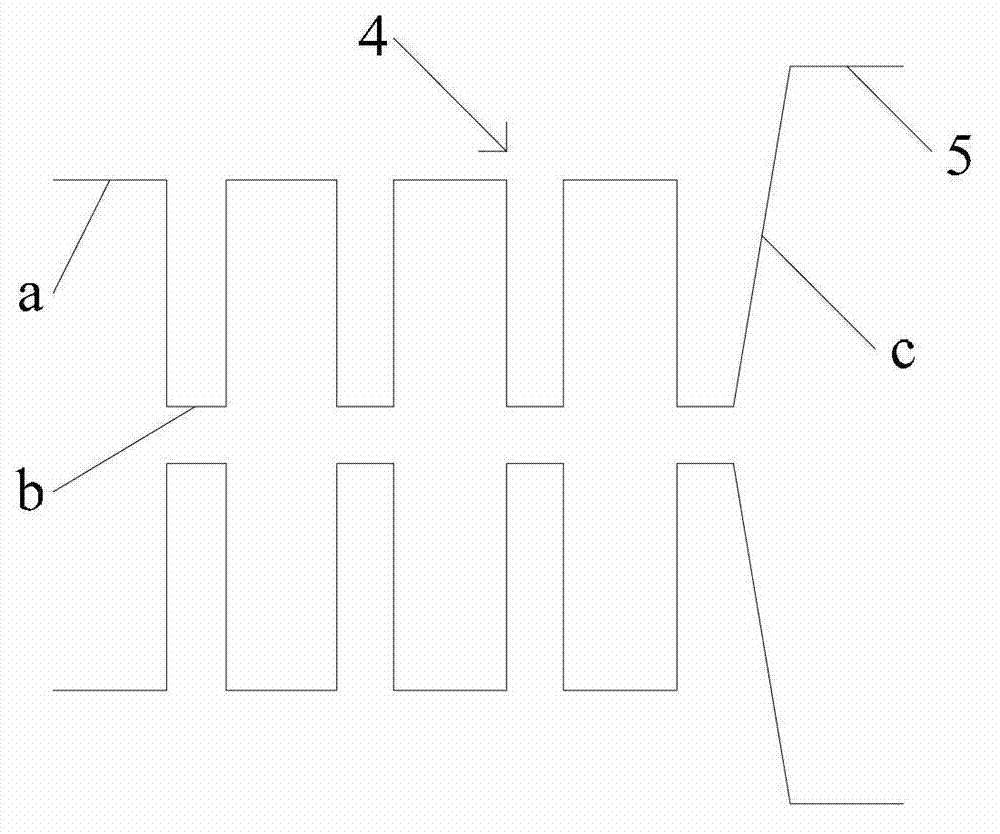Blue and green diode epitaxial slice and manufacturing method thereof
A technology of epitaxial wafers and diodes, which is applied in the field of diodes, can solve problems affecting the luminous efficiency of blue-green light-emitting diodes, and achieve the effect of improving luminous efficiency
- Summary
- Abstract
- Description
- Claims
- Application Information
AI Technical Summary
Problems solved by technology
Method used
Image
Examples
Embodiment 1
[0027] see figure 1 Embodiment 1 of the present invention provides a blue-green light diode epitaxial wafer, the epitaxial wafer includes a substrate layer 1, and a buffer layer 2, an N-type layer 3, a multi-quantum well layer 4, a P Type electron blocking layer 5 and P type layer 6.
[0028] Wherein, the substrate layer 1 includes but not limited to a sapphire substrate layer.
[0029] which, combined with figure 2 , the multi-quantum well layer 4 includes a composite layer formed alternately by several quantum barrier layers a and several quantum well layers b, and a transition layer c covering the composite layer. The layer in contact with the transition layer c in the composite layer is the quantum well layer b. The quantum barrier layer a uses GaN as a growth material, and the quantum well layer b uses InGaN as a growth material. The transition layer c also uses GaN as the growth material, but the thickness of the transition layer c is smaller than that of the quantu...
Embodiment 2
[0035] Embodiment 2 of the present invention provides a method for manufacturing a blue-green light diode epitaxial wafer, which is suitable for the blue-green light diode epitaxial wafer provided in Embodiment 1. The method includes:
[0036] 201 : growing a buffer layer 2 on the substrate layer 1 .
[0037] Specifically, the growth of the buffer layer 2 includes growth of a low-temperature buffer layer and growth of a high-temperature buffer layer. First, at a temperature of 625° C., a layer of non-doped GaN with a thickness of 30 nm is grown on the substrate layer 1 , which is a low-temperature buffer layer. Then, the temperature is raised to 1220° C., and a layer of non-doped GaN with a thickness of 3 μm is grown on the low-temperature buffer layer, which is a high-temperature buffer layer. So far, the growth of the buffer layer 2 is completed.
[0038] It is easy to know that before this step, the method further includes: cleaning the surface of the substrate layer 1 . ...
Embodiment 3
[0056] Embodiment 3 of the present invention provides a blue-green light diode epitaxial wafer. The structure of the epitaxial wafer is basically the same as that of the epitaxial wafer in Embodiment 1. The difference lies in that the combination image 3 , the composition of the transition layer c gradually changes from the growth material of the quantum well layer b to the growth material of the P-type electron blocking layer 5 . That is to say, in the composition of the transition layer c, the proportion of the growth material of the quantum well layer b gradually decreases, and the proportion of the growth material of the P-type electron blocking layer 5 gradually increases, and the composition of the transition layer c changes from all to The growth material of the quantum well layer b gradually becomes all the growth material of the P-type electron blocking layer 5 .
[0057] image 3 The energy band diagram of the multi-quantum well layer 4 and the P-type electron bloc...
PUM
| Property | Measurement | Unit |
|---|---|---|
| thickness | aaaaa | aaaaa |
Abstract
Description
Claims
Application Information
 Login to View More
Login to View More - R&D
- Intellectual Property
- Life Sciences
- Materials
- Tech Scout
- Unparalleled Data Quality
- Higher Quality Content
- 60% Fewer Hallucinations
Browse by: Latest US Patents, China's latest patents, Technical Efficacy Thesaurus, Application Domain, Technology Topic, Popular Technical Reports.
© 2025 PatSnap. All rights reserved.Legal|Privacy policy|Modern Slavery Act Transparency Statement|Sitemap|About US| Contact US: help@patsnap.com



